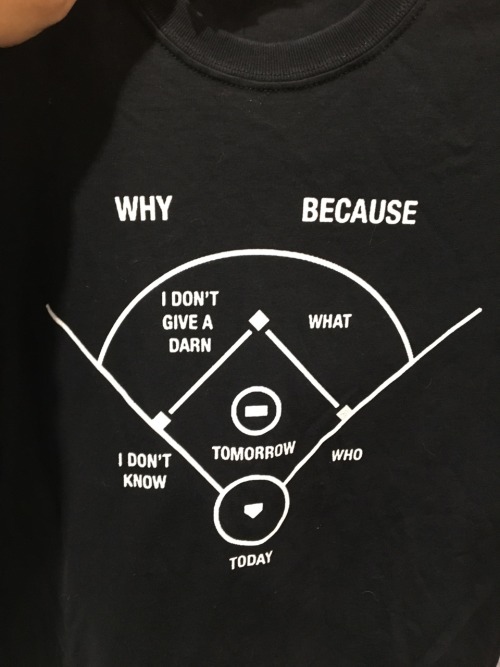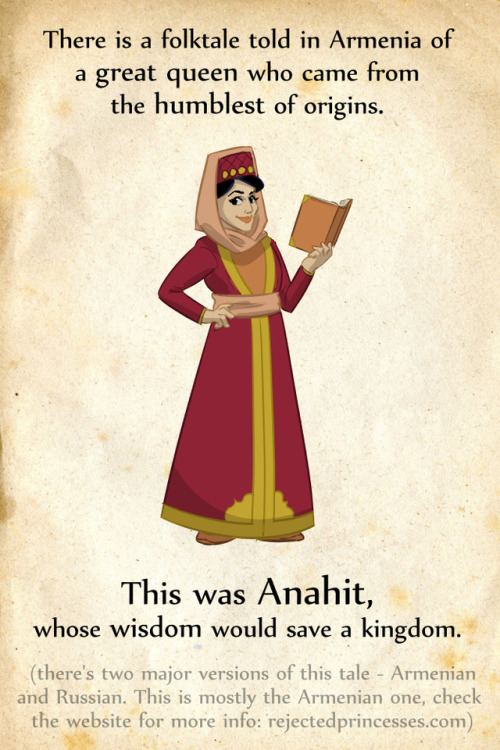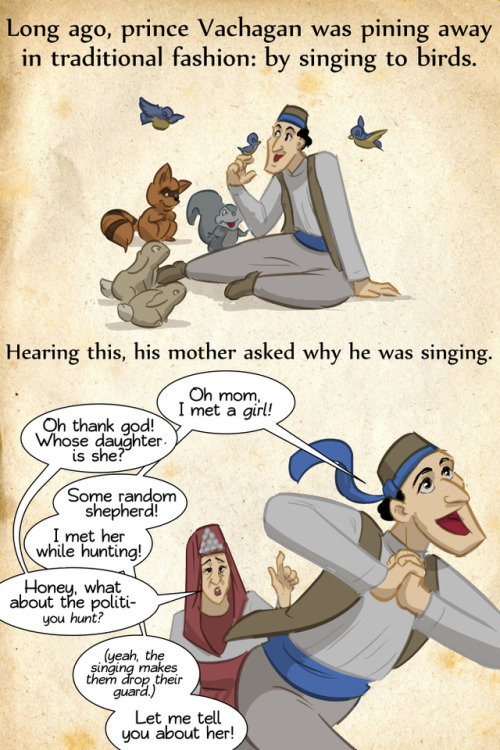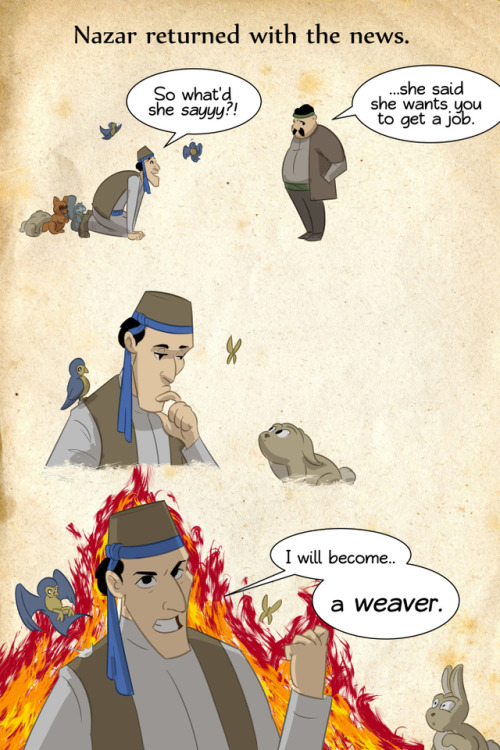Already Posted/talked About How Excited I’ve Been For The Release Of This Newly-published Book (Decolonizing
Already posted/talked about how excited I’ve been for the release of this newly-published book (Decolonizing “Prehistory”: Deep Time and Indigenous Knowledges in North America – 2021). But here are a few other cool-looking newly-published books (with publisher’s descriptions) from the same publisher, the University of Arizona Press.
——-

From the publisher’s description: “Decolonizing “Prehistory” combines a critical investigation of the documentation of the American deep past with perspectives from Indigenous traditional knowledges and attention to ongoing systems of intellectual colonialism. Bringing together experts from American studies, archaeology, anthropology, legal studies, history, and literary studies, this interdisciplinary volume offers essential information about the complexity and ambivalence of colonial encounters […] and their impact on American scientific d!scourse. […] Constructions of America’s ancient past – or the invention of American “prehistory” – occur in national and international political frameworks, which are characterized by struggles over racial and ethnic identities, access to resources and environmental stewardship, the commodification of culture for touristic purposes, and the exploitation of Indigenous knowledges and histories by industries ranging from education to film and fashion. The past’s ongoing appeal reveals the relevance of these narratives to current-day concerns about individual and collective identities and pursuits of sovereignty and self-determination, as well as to questions of the origin – and destiny – of humanity. Decolonizing “Prehistory” critically examines and challenges the paradoxical role that modern scholarship plays in adding legitimacy to, but also delegitimizing, contemporary colonialist practices.”
——-
The Dine Reader: An Anthology of Navajo Literature – 2021.

This wide-ranging anthology brings together writers who offer perspectives that span generations and perspectives on life and Diné history. The collected works display a rich variety of and creativity in themes: home and history; contemporary concerns about identity, historical trauma, and loss of language; and economic and environmental inequalities. The Diné Reader developed as a way to demonstrate both the power of Diné literary artistry and the persistence of the Navajo people. The volume opens with a foreword by poet Sherwin Bitsui, who offers insight into the importance of writing to the Navajo people. The editors then introduce the volume by detailing the literary history of the Diné people, establishing the context for the tremendous diversity of the works that follow, which includes free verse, sestinas, limericks, haiku, prose poems, creative nonfiction, mixed genres, and oral traditions reshaped into the written word. This volume combines an array of literature with illuminating interviews, biographies, and photographs of the featured Diné writers and artists.
——-
Moral Ecology of a Forest: The Nature Industry and Maya Post-Conservation – Jose E. Martinez-Reyes, 2021

Forests are alive, filled with rich, biologically complex life forms and the interrelationships of multiple species and materials. Vulnerable to a host of changing conditions in this global era, forests are in peril as never before. New markets in carbon and environmental services attract speculators. In the name of conservation, such speculators attempt to undermine local land control in these desirable areas. Moral Ecology of a Forest provides an […] account of conservation politics, particularly the conflict between Western conservation and Mayan ontological ecology. The difficult interactions of the Maya of central Quintana Roo, Mexico, for example, or the Mayan communities of the Sain Ka’an Biosphere, demonstrate the clashing interests with Western biodiversity conservation initiatives. The conflicts within the forest of Quintana Roo represent the outcome of nature in this global era, where the forces of land grabbing, conservation promotion and organizations, and capitalism vie for control of forests and land. […] The Maya Forest of Quintana Roo is a historically disputed place in which these three questions come together.”
——-
Food Plants of the Sonoran Desert – Wendy C. Hodgson, 2015

“The seemingly inhospitable Sonoran Desert has provided sustenance to indigenous peoples for centuries. Although it is to all appearances a land bereft of useful plants, fully one-fifth of the desert’s flora are edible. This volume presents information on nearly 540 edible plants used by people of more than fifty traditional cultures of the Sonoran Desert and peripheral areas. […] Food Plants of the Sonoran Desert includes not only plants such as gourds and legumes but also unexpected food sources such as palms, lilies, and cattails, all of which provided nutrition to desert peoples. […]
——-
Moveable Gardens: Itineraries and Sanctuaries of Memory – 2021

“Moveable Gardens explores how biodiversity and food can counter the alienation caused by displacement. By offering in-depth studies on a variety of regions, this volume carefully considers various forms of sanctuary making within communities, and seeks to address how carrying seeds, plants, and other traveling companions is an ongoing response to the grave conditions of displacement […]. The destruction of homelands, fragmentation of habitats, and post-capitalist conditions of modernity are countered by thoughtful remembrance of tradition and the migration of seeds, which are embodied in gardening, cooking, and community building. Moveable Gardens highlights itineraries and sanctuaries in an era of massive dislocation, addressing concerns about finding comforting and familiar refuges in the Anthropocene. […]”
——-
La Raza Cosmetica: Beauty, Identity, and Settler Colonialism in Postrevolutionary Mexico – Natasha Varner, 2020

“In the decades following the Mexican Revolution, nation builders, artists, and intellectuals manufactured ideologies that continue to give shape to popular understandings of indigeneity and mestizaje today. Postrevolutionary identity tropes emerged as part of broader efforts to reunify the nation and solve pressing social concerns, including what was posited in the racist rhetoric of the time as the “Indian problem.” Through a complex alchemy of appropriation and erasure, indigeneity was idealized as a relic of the past while mestizaje was positioned as the race of the future. This period of identity formation coincided with a boom in technology that introduced a sudden proliferation of images on the streets and in homes: there were more photographs in newspapers, movie houses cropped up across the country, and printing houses mass-produced calendar art and postcards. La Raza Cosmética traces postrevolutionary identity ideals and debates as they were dispersed to the greater public through emerging visual culture. […]”
——-
No Species Is an Island: Bats, Cacti, and Secrets of the Sonoran Desert – Theodore H. Fleming, 2017

“In the darkness of the star-studded desert, bats and moths feed on the nectar of night-blooming cactus flowers. By day, birds and bees do the same, taking to blooms for their sweet sustenance. In return these special creatures pollinate the equally intriguing plants in an ecological circle of sustainability. The Sonoran Desert is the most biologically diverse desert in the world. Four species of columnar cacti, including the iconic saguaro and organ pipe, are among its most conspicuous plants. No Species Is an Island describes Theodore H. Fleming’s eleven-year study of the pollination biology of these species at a site he named Tortilla Flats in Sonora […]. Among the novel findings are one of the world’s rarest plant-breeding systems in a giant cactus; the ability of the organ pipe cactus to produce fruit with another species’ pollen; the highly specialized moth-cactus pollination system of the senita cactus; and the amazing lifestyle of the lesser long-nosed bat, the major nocturnal pollinator of three of these species. […]”
——-
Whale Snow: Inupiat, Climate Change, and Multispecies Resilience in Arctic Alaska – Chie Sakakibara, 2020

“Whale Snow explores how everyday the relatedness of the Iñupiat of Arctic Alaska and the bowhead whale forms and transforms “the human” through their encounters with modernity. Whale Snow shows how the people live in the world that intersects with other beings, how these connections came into being, and, most importantly, how such intimate and intense relations help humans survive the social challenges incurred by climate change […].”
More Posts from Princess-of-lions and Others
So a lot of people are rightfully unhappy about the possibility that Katara will be aged up in the new Netflix version of The Last Airbender. That has a lot of issues and I’m glad people are talking about it.
But truthfully, I’ve always had some issues with how Katara’s relationship with Aang was handled. Generally, ATLA did very well with its female characters and gave us a lot of strong girls and women to admire, but it still had its flaws.
Specifically, the thing that bothered me the most when I first saw it as a child was the scene in Day of Black Sun where Aang kisses Katara without warning and without permission. That always made me uncomfortable.
There’s also the way the writers handled the development of their relationship. Throughout the series, it is made very obvious that Aang has a major crush on Katara. But while Katara cares deeply for Aang, she is pretty much never shown to have romantic interest in him - except for that time that the fortuneteller tells Katara that she will marry a powerful bender and Katara is reminded that Aang is a powerful bender, plus that time they dance together in the Headband. But honestly, neither of those carries a lot of weight, in my opinion, especially compared with other scenes. Katara explicitly has a pretty negative reaction to the idea of a relationship with Aang in the Ember Island Players episode - where, again, Aang kisses her without permission, right after she said she was confused. Again, she reacts negatively to the kiss, and to Aang’s pushiness regarding a relationship. It’s kind of hard to see how they could move from this point to a full blown romantic relationship over the next few episodes. (Honestly, I hate that scene for Aang. It’s a pretty negative characterization for him. This scene made me uncomfortable as a kid as well. Actually, I might have hated this scene more than the Day of Black Sun scene.)
Anyway, for most of the series, Katara acts more like an older sister or mother-figure to Aang. And then at the end of the series, Aang defeats the Firelord and suddenly Katara is all in for a relationship? I remember the first time I saw it, it seemed sudden within the context of the story. Outside of the context of the story, it pretty much looks like Katara was treated as a reward for Aang - the hero saves the day, gets the girl trope. I don’t think I need to explain why that’s bad. It was also weak within the story’s plot, because it’s not well-supported by Katara’s character arc.
So the two main problems with the Katara/Aang relationship, in my view, are these: one, Aang’s treatment of Katara within the story; and two, the writers’ treatment of Katara from outside the story.
(Plus, a 12/13 year old dating a 14/15 year old comes off kinda weird to me. A couple years difference matters at that age.)
This is honestly my biggest criticism of the series. It was still a great show, and I loved it, but as iconic as it was, it wasn’t perfect.
I almost scrolled past this; was not expecting it to be this funny oh my god

Well-behaved women seldom make history.
Laurel Thatcher Ulrich
This is very cool and I’d love to take a look at that movie but does anyone know where I can find it with English subtitles? Or if not, I saw something about it being produced with French subtitles - couldn’t find that one either - but that would work too
















Anahit: The Queen Who Made the King Get a Job (Armenian Folk Tale)
Full entry (with footnotes) here. Book here. Patreon here. Art notes and whatnot after the cut - but real quick:
Yes, she already has her own animated princess movie. It’s not in English. It was posted in full by the animation studio here, so I hope it’s okay to embed it:
This version seemingly takes some liberties. Her uncle is in league with some shadow demon, there’s a talking dog, and her horse turns into this fiery magic flying creature…? I don’t know.
Keep reading
I love elephants


Wake up kids, new extreme paint dropped
@4humanexperiment4 You have something of a point, sometimes bad social skills can be mistaken for harassment. Just last week, a much older man gave me a compliment in a weird context, and I and the girls around me weren’t sure what to think. I asked someone, and it turned out he was mentally disabled. So yes, that does happen. But let’s be real. That kind of thing is the exception, and it is extremely rare. The vast majority of the time, when an older guy is crossing a younger girl’s boundaries, it’s because he’s a creep.
So let me be clear. This instance was not one of those rare exceptions. This man’s intentions were absolutely deliberate and sexual in nature. There was zero ambiguity in that regard. He was not awkward about anything, he didn’t look confused when I jerked my foot away from him. He knew what he was doing.
With that said, I’m not necessarily accusing him of being a rapist or anything. I didn’t get the sense that he intended to hurt me or get violent. But I did feel very uncomfortable, confused, and self-conscious. It was not okay.
His actions were completely inappropriate, not least because: 1, he was a complete stranger who felt he had the right to make comments about my body and touch my foot (which was just flat-out weird) without any indication from me that that was okay; 2, he was significantly older than me; and 3, I was working.
So he may not be a rapist, but he is someone who would sexually harass a stranger, a teenage girl. Don’t excuse him.
(1/3) So, the store I work at just moved to a new location where there's greater foot traffic. Today was my second day there, and my first shift manning the store alone. I’m 18, by the way. Towards the end of the day, this guy came in. Sweaty from a run. Seriously muscled, maybe mid-to-late-twenties. Anyway, he started talking, being kinda friendly and joking, and also I had the impression of flirtatious too.
(2/3) I was, you know, wearing my ‘customers’ face. Anyway we’re chatting, I’m telling him about our soaps, etc. Then, he kinda stops, looks me up and down, and says, “You know, you have a great body. Do you work out?” And I’m like, ugh, internally. I shrug and tell him I do ballet. I go back to talking about the products, kind of just, you know, moving away, but he kept moving closer to me, getting within about a foot of me.
(3/3) We talk for a little bit more about the products, then he looks down, says “Wow! Your feet are so small! They’re tiny!” and then he knelt down and he grabbed my foot around the heel and lifted it up to examine it. I was so startled I nearly kicked him, but I just ended up just jerking my foot away. He stuck around for the rest of my shift (half an hour), and said he’s planning to come back and see me again. Any advice, anyone?
Okay that is seriously creepy and I’m so sorry you experienced this. Touching you without permission is harassment. A couple thing to do if he comes back in, optional, of course:
1. Immediately alert your manager or another person on staff. Tell them he has come in before to bother you, touched you without your permission, and makes you uncomfortable. Allow them to handle him while you wait in a back room.
2. If you do not have another person working with you, be sure to keep your distance from him. Stay behind a counter. If he lingers, inform him your “boss” has a policy against loitering, and you’ll have to ask him to leave if he isn’t shopping. If he inquires further, say that the door “has a counting metric, to see who enters and leaves without a purchase, and it affects your formal review”. (A retail shop I worked at before had this, it’s real tech). This is to encourage him to leave.
3. If he strikes up casual conversation about yourself, or asks your number, work in that you “have a boyfriend”. Creepy men often respect the “authority” of a created man having “ownership” of you more than your own bodily autonomy. This can make you safer and deter him from returning.
4. If he touches you again, tell him you are going to have to ask him to leave. He will likely do a big show of “wow you’re making something out of nothing!!” Calmly ask him again to leave. If he seems aggressive, remind him of the “cameras”. It doesn’t matter if you actually have cameras.
5. If he continously shows up to bother you, make sure a manger is on shift with you to deal with him.
6. If he ever follows you home, or shows up anywhere else in your life, call the police.
I hope some of this helps!
TIL, the residents of Cheran, Mexico armed themselves and kicked out the ruling cartel as well as every politician and policeman. It now functions as a legal self-governing indigenous community with a crime rate near 0%
via reddit.com
-
 martyrdomcomplex reblogged this · 3 weeks ago
martyrdomcomplex reblogged this · 3 weeks ago -
 dejavudreamer7 reblogged this · 3 months ago
dejavudreamer7 reblogged this · 3 months ago -
 fredmundo reblogged this · 3 months ago
fredmundo reblogged this · 3 months ago -
 tommykinard217 liked this · 3 months ago
tommykinard217 liked this · 3 months ago -
 michaelormewood reblogged this · 3 months ago
michaelormewood reblogged this · 3 months ago -
 kittyshiny reblogged this · 4 months ago
kittyshiny reblogged this · 4 months ago -
 quarkscooljacket reblogged this · 4 months ago
quarkscooljacket reblogged this · 4 months ago -
 martyrdomcomplex liked this · 4 months ago
martyrdomcomplex liked this · 4 months ago -
 rainhann liked this · 4 months ago
rainhann liked this · 4 months ago -
 limitlesspolydreamus liked this · 4 months ago
limitlesspolydreamus liked this · 4 months ago -
 wakingfromthewater reblogged this · 4 months ago
wakingfromthewater reblogged this · 4 months ago -
 katsetta liked this · 4 months ago
katsetta liked this · 4 months ago -
 turtwigbox liked this · 8 months ago
turtwigbox liked this · 8 months ago -
 lesbianjacinta reblogged this · 10 months ago
lesbianjacinta reblogged this · 10 months ago -
 adventuresadrenaline reblogged this · 1 year ago
adventuresadrenaline reblogged this · 1 year ago -
 aliendesires reblogged this · 1 year ago
aliendesires reblogged this · 1 year ago -
 inkdelicious liked this · 1 year ago
inkdelicious liked this · 1 year ago -
 workinggirlblues liked this · 1 year ago
workinggirlblues liked this · 1 year ago -
 futuehoe liked this · 1 year ago
futuehoe liked this · 1 year ago -
 plainoddboi reblogged this · 1 year ago
plainoddboi reblogged this · 1 year ago -
 viridianchronicle reblogged this · 1 year ago
viridianchronicle reblogged this · 1 year ago -
 lyracreek reblogged this · 1 year ago
lyracreek reblogged this · 1 year ago -
 uncommonviolet reblogged this · 1 year ago
uncommonviolet reblogged this · 1 year ago -
 hexwrtebj1i liked this · 1 year ago
hexwrtebj1i liked this · 1 year ago -
 mayigoto liked this · 1 year ago
mayigoto liked this · 1 year ago -
 dulceaphel liked this · 1 year ago
dulceaphel liked this · 1 year ago -
 portraitofemmy liked this · 1 year ago
portraitofemmy liked this · 1 year ago -
 queermil reblogged this · 1 year ago
queermil reblogged this · 1 year ago -
 2queensofhearts reblogged this · 1 year ago
2queensofhearts reblogged this · 1 year ago -
 armour-clad liked this · 1 year ago
armour-clad liked this · 1 year ago -
 diamondsandphoenixfire reblogged this · 1 year ago
diamondsandphoenixfire reblogged this · 1 year ago -
 lavendershazy liked this · 1 year ago
lavendershazy liked this · 1 year ago -
 savingthesethingsforlater reblogged this · 1 year ago
savingthesethingsforlater reblogged this · 1 year ago -
 desertchorus liked this · 1 year ago
desertchorus liked this · 1 year ago -
 chilipipper liked this · 1 year ago
chilipipper liked this · 1 year ago -
 flying-blue reblogged this · 1 year ago
flying-blue reblogged this · 1 year ago -
 flying-blue liked this · 1 year ago
flying-blue liked this · 1 year ago -
 mistybish reblogged this · 1 year ago
mistybish reblogged this · 1 year ago -
 whenunderwater liked this · 1 year ago
whenunderwater liked this · 1 year ago -
 trojan-seahorse liked this · 1 year ago
trojan-seahorse liked this · 1 year ago -
 deflatedrabbit liked this · 1 year ago
deflatedrabbit liked this · 1 year ago -
 third-nature reblogged this · 1 year ago
third-nature reblogged this · 1 year ago

